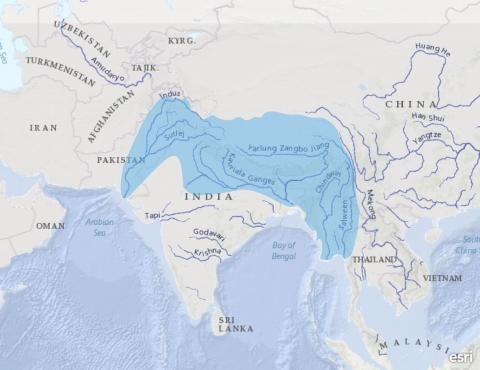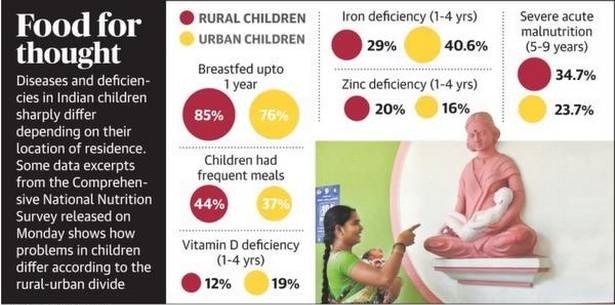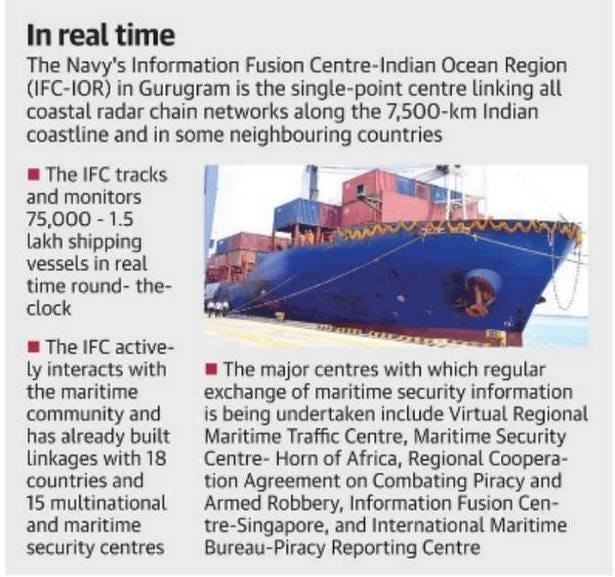Governance
National Nutrition Survey
The first-ever comprehensive National Nutrition Survey has been conducted by the Ministry of Health and Family Welfare and the United Nations Children Fund (UNICEF) to measure the level of malnutrition in India.
- The Comprehensive National Nutrition Survey is the largest micronutrient survey implemented globally to assess nutrient deficiency among children for the first time in India.
Key Findings
- Breastfeeding:
- 83% of children between 12 and 15 months continued to be breastfed in the country.
- A higher proportion of children (12-15 months) residing in rural areas are breastfed (85%) compared to children in urban areas (76%).
- Breastfeeding is inversely proportional to household wealth.
- The rural children receive meals more frequently (44%) as compared to 37% of urban children.
- Higher proportion of children residing in urban areas (26.9%) are fed an adequately diverse diet as compared to those in rural areas (19%).
- Iron Deficiency:
- Children and adolescents residing in urban areas have a higher (40.6%) prevalence of iron deficiency compared to their rural counterparts (29%) due to a better performance of the government’s health programmes in rural areas.
- Vitamin D Deficiency:
- Higher deficiency of Vitamin D in urban areas (19%) is observed compared to rural areas (12%). This is despite 74% of children living in cities consume dairy products as compared to 58% in rural areas.
- Zinc deficiency:
- The rural children lag in the intake of zinc which causes diarrhea, growth retardation, loss of appetite and impaired immune function.
- Among children aged 1-4 years, zinc deficiency is more common in rural areas (20%) compared to urban areas (16%).
- Obesity:
- 14.5% of children in the age group of 5 to 9 years in urban areas have higher Subscapular Skinfold Thickness (SSFT) than 5.3% in rural areas.
- Whereas 10.4% of adolescents surveyed in urban areas in the age group of 10-19 had higher SSFT than 4.3% in rural areas.
- Subscapular Skinfold Thickness (SSFT) measurement is a reliable, cheap, simple, noninvasive method of body fat estimation at all ages including the neonatal period.
- Stunting:
- Overall 35 % of Indian children aged 0-4 years were stunted.
- Rural areas witnesses a higher prevalence of stunting (37% ) versus 27% in urban areas.
- Bihar, Madhya Pradesh, Rajasthan, and Uttar Pradesh have a high (37-42 % ) stunting prevalence.
- The lowest prevalence of stunting (16-21 %) was found in Goa and Jammu and Kashmir.
- Severe Acute Malnutrition:
- 34.7% in rural areas for children in 5-9 years versus 23.7% in urban areas.
- 32.4%in rural areas for adolescents in 10-19 years versus 27.4% in urban areas.
- Considering the overall scenario the rural parts of the country face a higher percentage of children suffering from stunting, underweight and wasting compared to urban parts of the country.
- The survey also reveals that Indian children are facing the double burden of malnutrition and rising risk of non-communicable diseases including diabetes, high cholesterol, chronic kidney disease, and hypertension.
Social Justice
UNHRC’s UPR
The government is forming a task force to prepare a National Action Plan on Human Rights (NAPHR) as mandated under the UN Human Rights Council’s (UNHRC) Universal Periodic Review (UPR).
- The task force will involve the Union Home Ministry and the National Human Rights Commission (NHRC) and have representatives from ministries such as social justice and health.
- UPR is a state-driven process under UNHRC’s auspices and provides opportunities to member states to declare what actions they have taken to improve human rights and to fulfil their obligations.
- A review cycle lasts four-and-half years, during which records of member states are reviewed.
- Earlier in 2017, India accepted 152 out of 250 recommendations on human rights. These pertain to sustainable development goals related to eliminating poverty, access to safe drinking water, sanitation and improving protection for women and children.
- However, India “noted” and refused to accept some recommendations, including those related to the Armed Forces Special Powers Act and the Foreign Contribution Regulation Act.
- Also, earlier, the UN had already recommended that India should have NAPHR covering issues such as the rights to health, education, food security, and housing; aspects related to custodial justice; and measures against the trafficking of women and children.
- NAPHR, once implemented, will help mitigate the criticism India faces at international level when it comes to its human rights record as well as strengthen the social justice system.
- It will also lead to stronger administration of justice, strengthening of human rights institutions, and linking of rights with development.
UN Human Rights Council
- It is an inter-governmental body within the United Nations system responsible for strengthening the promotion and protection of human rights around the globe and for addressing situations of human rights violations and make recommendations on them.
- It was created by the United Nations General Assembly on 15th March 2006 and replaced the United Nations Commission on Human Rights.
- It meets at the UN Office at Geneva.
Indian Society
Meghalayan Minor Tribes Exclusion
Recently, the Government of Meghalaya has decided to exclude ‘unrepresented tribes’ from the provisions of the Sixth Schedule of the Constitution.
- The five minor tribes namely, Bodo-Kachari, Hajong, Koch, Mann, and Rabha are clubbed together as ‘unrepresented tribes’ for nomination in Meghalaya’s autonomous tribal councils.
- These minor tribes are indigenous to Meghalaya and have been living in the state much before its creation in 1972.
- These tribal councils are in the names of Garo, Jaintia, and Khasi district councils, that form the State’s three major autonomous councils (predominantly the matrilineal communities).
- On September 26, 2019, a sub-committee constituted by the State government had decided to recommend to the Standing Committee of Parliament for the removal of the word ‘unrepresented tribes’ from the Sixth Schedule.
- This move has excluded 5 minor tribes in the State.
- The Sixth Schedule makes special provisions for the welfare and advancement of the Scheduled Tribes and the tribal areas residing in the parts or the whole of the four northeastern states namely, Assam, Meghalaya, Mizoram, and Tripura.
- The proposed amendment will deprive some of these Scheduled Tribes of their constitutional rights to be represented in the autonomous district councils as of now, it will not be possible for them to get elected on the basis of adult suffrage.
Hajong Tribe
- The Hajong are tribal people native to the Indian subcontinent mostly in the northeast Indian states and Bangladesh. The majority of them are settled in India.
- Hajongs are predominantly the rice farmers and perform endogamy.
- The Hajongs are Hindus and observe Hindu rites and customs.
Rabha Tribe
- They are indigenous Mongoloid community of Nepal, Bhutan, Thailand, Myanmar, and Bangladesh, and the Indian states of Assam, Meghalaya and West Bengal.
- The language/dialect spoken by the Rabha people is mostly Rabha as well as Assamese.
- In Meghalaya, Rabhas are mostly found in Garo Hills districts.
Koch Tribe
- They are a Tibeto-Burman ethnolinguistic group of Assam, Meghalaya, West Bengal, and Bangladesh.
- Their language belongs to the Tibeto-Burman linguistic group.
- According to the census of 1881, Koch belong to a group of Bodo-Kachari people.
Bodo-Kachari
- It is a generic term applied to a number of ethnic groups that are predominantly living in the Northeast Indian state of Assam.
- They generally speak Assamese and other Tibeto-Burman languages and have a shared ancestry.
Internal Security
87th Air Force Day
The Defence Minister of India formally received the first Rafale fighter jet (RB-001) built for the Indian Air Force (IAF) in France on 8th October, 2019, coinciding with 87th Air Force Day.
- In September 2016, India and France signed a €7.87 billion Inter-Governmental Agreement (IGA) for 36 Rafale multi-role fighter jets in fly-away condition.
- As per IGA, deliveries have to begin 36 months from signing of contract and will be completed in 67 months.
- It is expected that India will receive all aircraft by April-May 2022.
- The RB in the aircraft designation stands for IAF Chief Marshal R.K.S. Bhadauria who as then Deputy Chief of IAF led the Indian negotiation team and had a major role in the contract negotiations.
- About Rafale:
- It is a twin-jet fighter aircraft able to operate from both an aircraft carrier and a shore base.
- It is a fully versatile aircraft which can carry out all combat aviation missions to achieve air superiority and air defence, close air support, in-depth strikes, reconnaissance, anti-ship strikes and nuclear deterrence.
- India’s Preparation:
- The IAF has already completed preparations, including required infrastructure and training of pilots.
- The aircraft will be deployed at Ambala air force station, considered one of the most strategically located bases of the IAF. The Indo-Pak border is around 220 km from there.
- The second squadron of Rafale will be stationed at Hasimara base in West Bengal.
87th Air Force Day
- The Indian Air Force was officially established on 8th October 1932.
- With around 1, 70,000 personnel and 1,500 aircraft, IAF is the fourth largest air force in the world after the US, Russia and China.
- Every year, the Air Force Day is celebrated at Hindon base in the presence of the IAF chief and senior officials of the three armed forces.
- IAF's Hindon Air Force Station, situated near Ghaziabad (Uttar Pradesh) is the largest in Asia and 8th largest in the world.
- This year the event saw IAF’s newest acquisitions—US-made Chinook heavy-lift helicopters and Apache attack helicopters—in the customary flypast.
- The Air Chief Marshal also made a reference to the Balakot Strikes.
Important Facts For Prelims
Hindu-Kush-Himalayan Region
The India Meteorological Department (IMD) will collaborate with meteorological agencies in China and Pakistan, among others, to provide climate forecast services to countries in the Hindu-Kush-Himalayan (HKH) region.
- The World Meteorological Organisation (WMO) has proposed for establishment of regional climate centres in Islamabad, Delhi and Beijing.
- These centres are expected to provide forecasting services and climate analyses.
- They would also provide data sharing services, training and capacity-building, research and development.
Hindu-Kush-Himalayan (HKH) Region
- The HKH region spans Afghanistan, Bangladesh, Bhutan, China, India, Kyrgyzstan, Mongolia, Myanmar, Nepal, Pakistan, Tajikistan, and Uzbekistan.
- It traverses about 5 million square kilometres and hosts a large and culturally diverse population.
- It is considered the Third Pole (after the North and South Poles), and has significant implications for climate.
- It contains vast cryospheric zones and is also the world’s largest store of snow and ice outside the polar region.
- A recent report by the Intergovernmental Panel on Climate Change has highlighted the threat to the HKH region from global warming.
- Floods would become more frequent and severe in the mountainous and downstream areas of the Indus, Ganges and Brahmaputra river basins, because of an increase in extreme precipitation events.
- Also, the severity of floods is expected to more than double towards the end of the century.
India Meteorological Department
- It is the principal agency under the Ministry of Earth Sciences (MoES), Government of India responsible for meteorological observations, weather forecasting and seismology.
- It is headquartered in Delhi and operates hundreds of observation stations across India and Antarctica.
- It is also one of the six Regional Specialised Meteorological Centres of the World Meteorological Organization.
- It also has the responsibility for forecasting, naming and distribution of warnings for tropical cyclones in the Northern Indian Ocean region, including the Malacca Straits, the Bay of Bengal, the Arabian Sea and the Persian Gulf.
World Meteorological Organization
- The World Meteorological Organization (WMO) is an intergovernmental organization with a membership of 193 Member States and Territories.
- Established by the ratification of the WMO Convention on 23 March 1950, WMO became the specialized agency of the United Nations for meteorology (weather and climate), operational hydrology and related geophysical sciences.
- It is headquartered in Geneva, Switzerland.
Important Facts For Prelims
Information Fusion Centre- Sharing Maritime Data
The Information Fusion Centre for the Indian Ocean Region (IFC-IOR) that was set up last year (in 2018) has started functioning as an information-sharing hub of maritime data.
- The centre will set up a line of action for incident responses to maritime security situations through a collaborative approach.
- The centre is administering a website to undertake the collection and dissemination of information on a daily basis and host the Monthly Maritime Security Update (MMSU) highlighting analysis on incidents, warnings, and advisories issued in the IOR.
- It is actively interacting with the maritime community and has already built linkages with 18 countries and 15 multinational/maritime security centres.
- All countries which have signed white shipping (commercial shipping information about the movement of cargo ships) information exchange agreements with India are IFC partners.
- Several Indian Ocean littoral states that have joined the coastal radar chain network include Maldives, Mauritius, Sri Lanka, and Seychelles.
Important Facts For Prelims
Saturn: Planet with Most Moons
Recently the discovery of 20 new moons of Saturn has made Saturn the planet with the highest number of moons (82) against 79 moons of Jupiter.
- The discovered moons of planet Saturn may have once comprised a larger moon that was broken apart in the distant past.

- The newly discovered moons are able to continue orbiting Saturn after their parent moons broke apart indicates that these collisions occurred after the planet-formation process was mostly complete.
- These moons are the remnants of the objects that helped for planet formations thus studying the remnants might reveal the origin of the planet.
- Also, studying the orbits of these moons can reveal their origins, as well as information about the conditions surrounding Saturn at the time of its formation.
- The research related new moons of the planet Saturn have been released by the International Astronomical Union’s Minor Planet Centre.
Important Facts For Prelims
Ganga Aamantran
The Ganga Aamantran Abhiyan is an exploratory open-water rafting and kayaking expedition on the Ganga River that is to be held between 10th October 2019 to 11th November 2019.
- The expedition will start at Devprayag (Uttarakhand) and will culminate at Ganga Sagar (West Bengal) covering the entire stretch of the Ganga River.
- This is the first-ever effort by National Mission for Clean Ganga to raft across the entire stretch of the river.
- The expedition is expected to draw focused attention to the ecological challenges being faced by Ganga.
- It is the longest ever social campaign undertaken through an adventure sporting activity to spread the message of river rejuvenation and water conservation on a massive scale.
- A nine-member team of swimmers and rafters from the three services of the Indian Armed Forces will organize mass cleaning drives, interact with students of the village/city and will further spread the message of river conservation.
- Apart from the awareness campaign, the team from CSIR–Indian Institute of Toxicology Research will collect water samples from across diverse ranges of the river for the purpose of water testing, while members of the Wildlife Institute of India will undertake flora and fauna census for the year 2019.
- The expedition will encompass the five Ganga basin states that includes, Uttarakhand, Uttar Pradesh, Jharkhand, Bihar, and West Bengal.
- Ganga Aamantran also aims to connect various Ganga’s stakeholders in order to improve its water quality.
Council of Scientific & Industrial Research- Indian Institute of Toxicology Research (CSIR- IITR)
- CSIR-IITR is a leading laboratory of CSIR in toxicology research that aims to mitigate the problems associated with human health and the environment.
- It was established in 1965 and is based in Lucknow, UP.
Wildlife Institute of India
- The Wildlife Institute of India (WII) is an autonomous institution under the Ministry of Environment Forest and Climate change.
- It was established in 1982.
- It is based in Dehradun, Uttarakhand.
- It offers training programs, academic courses, and advisory in wildlife research and management.






